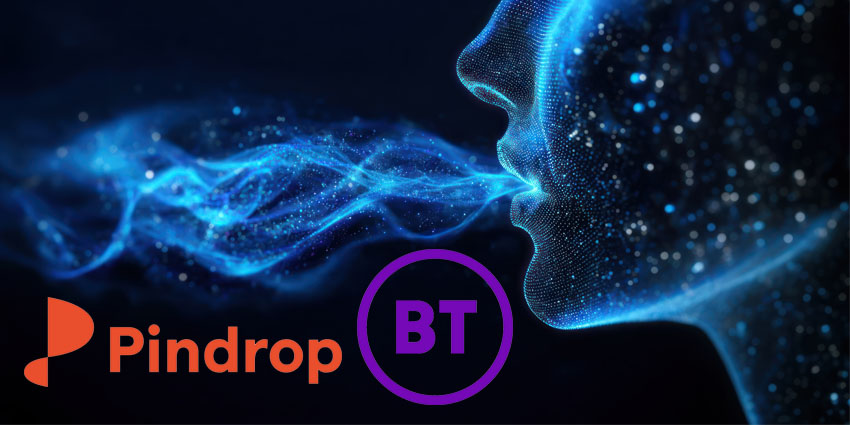As we navigate the evolving landscape of work, the tools and methods we use for communication and collaboration are transforming at an unprecedented pace. Businesses are investing in cutting-edge technologies to keep up with the needs of a modern, often decentralized, workforce. This blog explores the pivotal trends shaping the future of workplace communication and collaboration and what’s in store for the year ahead.
Hybrid-First Culture: The Ever-Developing Need to Support Hybrid Work
The global pandemic served as a catalyst for an already burgeoning trend—remote work. As we emerge into a new normal, the concept of a remote-first culture is no longer a contingency plan but a strategic necessity. Companies are adopting tools and technologies designed for remote collaboration, underscoring the point that geographic location has become less relevant to effective work.
However, as vaccines roll out and businesses gradually reopen their physical spaces, we find ourselves in a hybrid work model that blends the best of both worlds. Organizations are recognizing that the future of work is neither entirely remote nor wholly in-office but a mix that offers flexibility while retaining the benefits of in-person collaboration.
For partner organizations tasked with advising, deploying, and managing communication and collaboration tools, this presents a complex challenge. They must offer solutions that serve both in-office and remote workers without compromising on functionality or security.
Tech Stack Implications – The technology stack for a hybrid work model needs to be cohesive, streamlined, and, above all, secure. It’s not just about picking the right UC provider or collaboration platform but ensuring these tools work seamlessly regardless of where an employee is logging in from. This also means robust security protocols that protect data and ensure privacy, irrespective of location.
Accessibility and Inclusion – A hybrid culture inherently demands that technology be accessible to everyone. Partner organizations must therefore consider the user experience from multiple perspectives, ensuring that solutions are inclusive and equitable for all team members, regardless of their physical work location.
Employee Training and Adaptability – Training becomes doubly important in a hybrid model. Employees need to adapt to different sets of tools based on their work location for the day or week. Organizations thus face the task of not just deploying technology but also ensuring that businesses are equipped to train their employees to use these tools effectively in varying contexts promoting inclusive and equitable experiences.
The growing emphasis on a hybrid-first culture and the complex reality of hybrid work models present both challenges and opportunities for partner organizations. It’s not just about keeping up with the technology, but understanding the broader shifts in work culture and providing holistic solutions that cater to these ever-changing needs.
Enterprises will need to adopt Hybrid-First strategies or risk losing pace with the rest of the world
Async Video Is on the Rise: The Resurgence of Asynchronous Communication
While Unified Communications (UC) platforms have championed real-time collaboration, making interactions seamless and instantaneous, there’s a growing trend that indicates a swing back to asynchronous communication—especially in the realm of video. The recent acquisition of Loom by Atlassian for approximately 1 billion dollars, as well as the rise of features like Zoom Clips, suggests that the market is ripe for asynchronous video communication.
Global Teams and Multilingual Challenges – Asynchronous video is particularly beneficial for global teams operating across different time zones and languages. Not everyone can join a video meeting at the same time, and even when they can, language barriers can impede effective communication. With async video, team members can record their inputs at their convenience, and others can view and respond when it suits them, reducing the stress of coordinating across time zones.
The On-Demand Trend in the Workplace – The consumer world’s on-demand culture—think Netflix, Spotify, or any streaming service—is now permeating the workplace. Employees are growing accustomed to accessing what they need, when they need it, without being tied to a live schedule. Asynchronous video fits perfectly into this on-demand paradigm, giving employees the flexibility to consume and contribute content on their own terms.
The Role of Generative AI – Generative AI can take asynchronous video to the next level. Imagine a system that can automatically transcribe video messages, translate them into multiple languages, and even generate summaries or action items based on the content. Add to that the ability to search through video content as easily as text, and you’re looking at a revolutionary change in how we interact and collaborate.
As the lines between real-time and asynchronous communication continue to blur, the rise of asynchronous video could not be more timely. It addresses several challenges posed by today’s global, fast-paced work environment and, when coupled with emerging technologies like generative AI, offers endless possibilities for making workplace communication more flexible, inclusive, and efficient.
Async video will continue to permeate in the workplace
Meetings 3.0: The Next Wave of Innovation in Video Collaboration
As we usher in a new era of workplace communication, the concept of ‘Meetings 3.0’ takes center stage, revolutionizing how we think about video conferencing and hybrid work environments. Fueled by advancements in Generative AI, video conferencing—or simply “meetings” as the modern vernacular prefers—is evolving into a multi-dimensional experience that offers far more than just face-to-face interactions.
The conventional video conferencing experience is getting a major upgrade. Think breakout rooms that can be instantaneously created based on the real-time analysis of meeting agendas, AI-driven whiteboards that can turn scribbles into actionable tasks, or even real-time translation services that remove language barriers at the click of a button. Partner organizations should anticipate these advanced features and prepare to advise, deploy, and train teams on how to leverage them.
Intelligent Room Systems and Flexible Spaces – The physical meeting room is also undergoing a transformation. Intelligent room systems can adapt lighting, acoustics, and even seating arrangements based on the type of meeting scheduled, enhancing both in-person and virtual participation. The rise of high-impact spaces and signature rooms, designed to provide immersive experiences, will redefine what we consider a “meeting room.” Companies are also repurposing traditional rooms to accommodate non-conventional uses, like meditation or brainstorming spaces, further blurring the lines between work and well-being.
Hyper-Productivity and Employee Experience – Meetings 3.0 is not just about technology; it’s also about people. The new wave of innovations aims to make meetings hyper-productive, cutting down on unnecessary time-wasters and focusing on decision-making and problem-solving. Generative AI can help summarize key points, identify action items, and even schedule follow-up meetings, significantly enhancing the employee experience and productivity.
The Multi-Dimensional Future – The term ‘video conferencing’ feels almost archaic when discussing Meetings 3.0. We’re looking at a future where meetings are multi-dimensional platforms that cater to the various needs of a hybrid work environment, global teams, and the demand for greater work-life integration.
As we enter a new year, Meetings 3.0 represents a frontier of untapped possibilities and opportunities. It’s not just a trend but a fundamental shift in how organizations will communicate, collaborate, and operate. It’s a space of innovation that promises to redefine our understanding of meetings and productivity, making it an exciting arena for businesses and partner organizations alike to watch, adapt, and grow.
Meetings 3.0 is not just about technology; it’s also about people.
The Future of AI in Unified Communications
As Artificial Intelligence (AI) continues to evolve, its applications in UC are expanding beyond meeting summaries and predictive text, offering more sophisticated features that enhance both productivity and user experience. Here’s how:
Actionable Insights – Generative AI or ‘GenAI’ for short, has the potential to scan and analyze real-time conversations, extracting key data points and actionable insights. These can be presented to decision-makers instantly, enabling quicker, more informed choices. For partner organizations, this means not just deploying the technology but also training users to interpret and act on these insights effectively.
Task Creation – Imagine ending a team meeting and having all your to-dos already itemized, prioritized, and assigned, all thanks to AI that listened in and understood the context of your discussions. For partners, the challenge lies in seamlessly integrating this feature into existing workflows and ensuring that tasks generated align well with organizational objectives.
Scheduling – AI in UC could soon automate the tedious task of scheduling, taking into account team members’ time zones, preferences, and workloads. Partner organizations must guide businesses in adopting this technology in a manner that respects user autonomy and privacy concerns.
These groundbreaking applications of generative AI can make UC platforms not just tools of communication, but intelligent agents that actively facilitate better decision-making and planning. Technology professionals and partner organizations, therefore, must stay ahead of the curve, fully understanding the nuances and capabilities of these new features to provide comprehensive, up-to-date advisory and deployment services.
The potential of AI to revolutionize Unified Communications is vast. It promises to make our interactions more meaningful, our decisions more data-driven, and our workflows more efficient. But it also challenges partner organizations to continually evolve, broadening their expertise and services to encompass these exciting new capabilities.
Generative AI applications in UC will continue to expand beyond meeting summaries and predictive text in the year ahead
Employee Engagement as a New Frontier in UC
The lines between Customer Experience (CX) and Employee Experience (EX) are increasingly blurring, giving rise to unified platforms that serve the holistic needs of an organization. As we move forward, the integration of employee engagement technology into the core UC stack will become more prominent, reflecting the symbiotic relationship between customer satisfaction and employee well-being.
Traditionally, Unified Communications (UC) focused mainly on facilitating internal and external communications. However, the scope is broadening to include features geared towards employee engagement. Contact center workforce engagement management tools, for instance, are increasingly becoming a part of the core UCaaS and CCaaS combined offerings rather than a peripheral add-on limited to contact center platforms only. Over time, expect to see features like real-time feedback, personalized learning paths, and gamification become integral parts of UC platforms.
Successful Examples and Predictions – Recent acquisitions in the tech world signal this convergence. Zoom’s acquisition of Workvivo, an employee experience platform that enhances internal communication and engagement, is a strong indicator. Microsoft Viva is another platform that bridges the gap between UC and EX, offering features like employee well-being analytics and learning modules within the Microsoft Teams ecosystem.
Simplifying the Tech Stack – One of the key advantages of this integration is the simplification of the technology stack. Rather than juggling multiple platforms to manage CX and EX, organizations can now look for unified solutions that serve both needs effectively. This not only reduces operational complexity but also ensures a cohesive brand experience, as both employees and customers are interacting with the same interface and tools.
The Impact on Partner Organizations – For partner organizations responsible for advising, deployment, and adoption, this convergence offers new avenues for consultancy and service offerings. They will need to build expertise in these new, integrated UCaaS and CCaaS platforms and understand how to implement them in a way that enhances both CX and EX effectively.
The integration of CX and EX into the Unified Communications landscape marks a significant shift in how businesses will approach both customer and employee engagement. It’s a trend that’s gaining traction, simplifying operational workflows, and contributing to a more unified, cohesive brand experience. As we look to the future, this integrated approach will likely become the norm rather than the exception, offering exciting opportunities for innovation and growth.
Expect to see features like real-time feedback, personalized learning paths, and gamification become integral parts of UC platforms
Compliance and Security Considerations
As Unified Communications platforms become more advanced, integrating elements of AI and employee engagement, the compliance and security considerations surrounding these technologies have never been more relevant. For businesses and partner organizations alike, focusing on these aspects is not just good practice—it’s essential for maintaining trust and ensuring compliance.
Data Privacy and Compliant AI – Generative AI brings unparalleled capabilities to UC platforms, from providing real-time actionable insights to automating task creation. However, the compliance implications of using AI to analyze and generate conversational data cannot be ignored. There is an increased need to ensure that AI algorithms stick to the regulations and do not inadvertently compromise privacy rules.
Compliance Tools Take Center Stage – With the complexity introduced by AI and data analytics, compliance management tools are likely to become central components of UC platforms. Whether these tools are built in-house or integrated through third-party solutions, they will be crucial for businesses to keep track of regulatory requirements and to ensure compliant use of technology. With increased investment in security and compliance in 2023, expect this trend to continue in the upcoming year.
Control Without Compromise – Striking a balance between data control and feature functionality is a challenging endeavor. Businesses want to control their data but are wary of implementing measures that could inhibit user experience or hamper productivity. Thankfully, advancements in technology are making it possible to achieve both. By putting data and AI at the core of your tech stack, organizations can more easily layer compliance and security measures without sacrificing features.
For tech leaders navigating this landscape, the key takeaway is to embed data and AI capabilities as foundational elements in your tech stack. This strategic move allows for easier integration of compliance and security layers, simplifying the process of adapting to regulatory changes and emerging privacy considerations.
The year ahead promises not just technological advancements but also an increased focus on the compliance and security implications of UC and collaboration tools. Organizations that proactively address these considerations will be better positioned to build trust, ensure compliance, and take full advantage of the capabilities that next-generation UC platforms offer.
With the complexity introduced by AI and data analytics, compliance management tools are likely to become central components of UC platforms.
Optimizing Investments for Maximum ROI
As the Unified Communications (UC) landscape rapidly evolves, driven by technological innovations and particularly the advent of AI, organizations find themselves at a critical juncture. The decisions made today about technology investments will significantly impact the ability to adapt, innovate, and realize maximum return on investment (ROI) in the future.
Vendor Selection: A Core Decision – Selecting vendors wisely is of paramount importance as businesses prepare to incorporate AI into their UC stacks. Vendors should not only offer cutting-edge AI features but also provide robust security and compliance options. AI and data capabilities should be evaluated rigorously, keeping in mind the organization’s specific needs, goals, and compliance considerations.
Federated AI: A Strategic Choice – Will your organization opt for a single AI vendor, or will you adopt a federated approach that allows for seamless integration of multiple vendors? The federated approach could offer the flexibility of leveraging best-in-class features from various providers. However, it could also introduce complexity, especially concerning data integration and security.
Maximizing Adoption – Beyond the initial selection of technology, the challenge lies in maximizing adoption across the organization. A well-thought-out training and onboarding process is crucial for realizing the full benefits of the technology.
The Right Tech Stack Architecture – Having the right tech stack architecture is fundamental to securing budget approvals. The tech stack should be scalable, secure, and easy to integrate with first-party data sources. The goal is to set up an infrastructure that maximizes ROI not just in terms of financial gains but also in terms of efficiency, productivity, and adaptability.
Opportunities for Channel Partners – The current landscape offers a rich opportunity for channel partners, but the stakes are high. Success will require a deep skill set that spans AI, data, and security. Partners must be prepared to offer advanced solutions that align closely with their customers’ increasingly complex needs.
Optimizing investments in the UC space is a multidimensional challenge that involves more than just selecting the right vendor. It requires a strategic approach to tech stack architecture, vendor relationships, and user adoption. By carefully considering these elements, organizations can position themselves to reap maximum ROI, making them more agile, efficient, and ready for the opportunities that lie ahead.
AI and data capabilities should be evaluated rigorously
Navigating the Future of Unified Communications
As we look ahead to the future of Unified Communications (UC), the landscape is awash with possibilities, challenges, and transformative shifts. From the emergence of Meetings 3.0, the integration of Customer Experience (CX) and Employee Experience (EX), to the compliance and security implications of technology, the road forward is both exhilarating and complex.
The Heart of the Matter: Data and AI – One unambiguous takeaway is the critical importance of placing data and AI at the core of your UC strategy. These elements are no longer peripheral; they are becoming central to effective communication and collaboration. A strong tech stack architecture that accommodates these key components will be vital for ensuring scalability, security, and most importantly, maximizing ROI.
A Bold Prediction: The Shift to Data-Centricity – As we move forward, traditional communication channels—such as voice, video, and messaging—will likely become secondary to AI, data, and analytics. Expect to see tech vendors partnering more closely with data platform vendors to enable a smooth transition to more data-centric communication strategies. This will set the stage for more informed, agile, and responsive operations.
The Future is Bright, but Needs Batteries – The promise of what lies ahead is tantalizing, yet it requires significant investment—not just financial, but also in skills and resources. As the focus of UC platforms broadens to include AI and data analytics, expertise in these areas will become invaluable. This opens up vast opportunities for industry professionals in partner organizations and end-customer roles to add unprecedented value to their enterprises.
Seizing the Opportunity – For tech leaders, channel partners, and professionals working within organizations, now is the time to deepen your expertise across AI, data, and security. Being able to offer a full suite of advanced skills will ensure that you are where your customers—or your organization—want to be.
The future of Unified Communications is incredibly bright, but keeping the lights on will indeed require “a lot of batteries.” As we embark on this exciting journey, the opportunities for adding value and driving change are limitless. Prepare wisely, invest strategically, and the potential for transformative success is yours for the taking.
Useful Resources & Events
For Further Understanding of the UC Market and Latest Trends
- Watch UC Trends 2024 and our BIG UC Update
- Visit our vendor Marketplace
- Watch UC TV for all our latest interviews
- Subscribe to our Weekly Newsletter
- View 2023’s award-winning vendors







